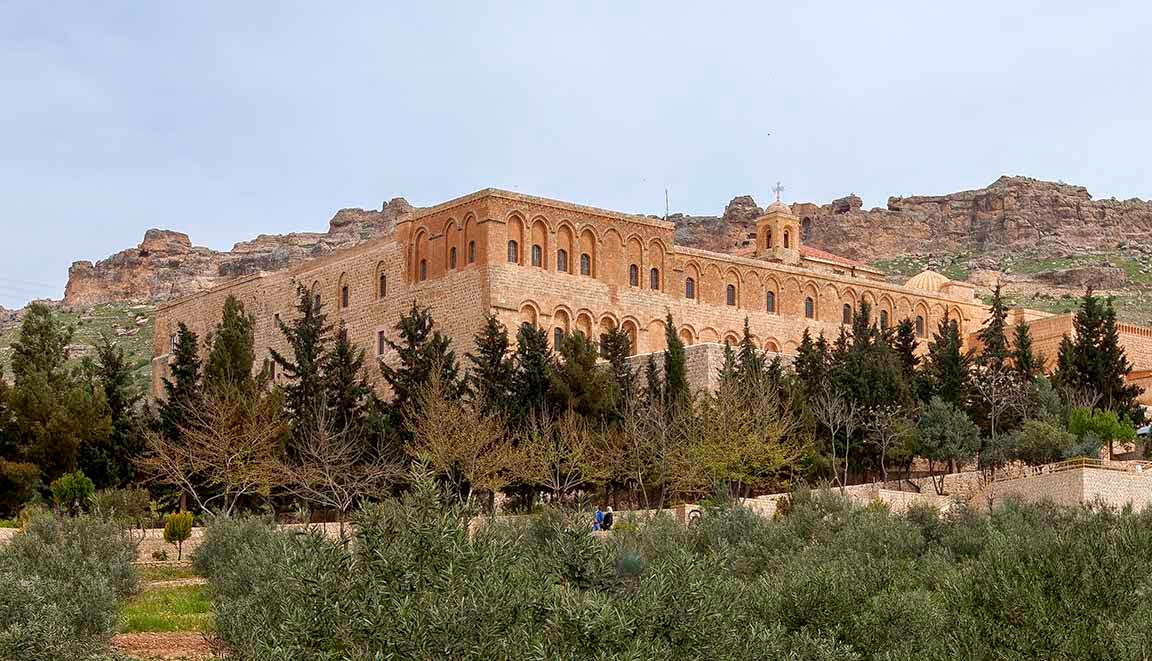Turkmenistan | Tagtabazar | Yekedeshik Cave Complex | Part 2
The Yekedeshik Cave Complex is located high above the east bank of Murghab River about fourteen miles north of the Turkmenistan-Afghanistan border. “Yekedeshik” is supposedly an archaic Turkish word meaning “single orifice”. The name refers to the single entrance to entire complex. There are five floors to the complex, although only the top two are now open to the public. The entrance opens into the fourth floor. The fourth and fifth floor contain forty-four rooms, so it is probable that the entire complex has well over 100 rooms. The chambers were carved out of soft sandstone with what were apparently pick-like implements.
The really surprisingly thing about the complex is how little is know about who built it, for what purpose, and when. Almost everything said about the caves is speculation. Legends and tall tales abound of course. One legend maintains that the caves are not of human provenance at all, but were instead created by jinns, which according to Arab and Muslim mythology are spirits of a lower rank than angels who can appear in both human and animal form. Another legend maintains that the caves were built and used as living quarters by the troops of the Greek adventurer Alexander the Great when they passed through this region in the fourth century B.C. According to this variant, the original caves were once thirty miles long and the current caves are just remnants of a much larger complex. Also according to this legend, the caves extended far into what is now Afghanistan and were later used for smuggling.
Russian scholars who have studied the complex have opined that it was once a monastery, but even they hesitate to say whether it hosted Buddhists or Christians. Both Buddhism and Christianity were practiced in this area prior to the arrivals of Arabic Muslim invaders in the 650s A.D. Remnants of a Buddhist monastery can still be seen amidst of the ruins of ancient Merv 125 miles north of here, and there are many remains of Buddhist culture in Afghanistan just to to the south. Buddhism may have been in decline by the time the Arabs arrived, and what Buddhists did remain were probably stamped out, since they were viewed as idolators. Christians, on the other hand, were, like Muslims, “People of the Book” and thus tolerated by the Arab invaders. Indeed, from 553 A.D. to the eleventh century, some four hundred years after the arrival of Islam, Merv was a headquarters of the Nestorian Christian Church, sometimes called the Church of the East. A Nestorian college or seminary was operating in Merv as late as 1340.
There is of course the possibility that the complex was first a Buddhist Monastery and later converted into a Christian monastery after Buddhism was stamped out. It is also not outside the realm of possibility that it once housed some heretical Islamic sect. No one has offered an opinion on when it was abandoned. Local people no doubt knew about the caves after they were no longer inhabited, but the complex did not come to the attention of the scholarly world until the early twentieth century when Turkmenistan became part of the Soviet Union.
The single entrance to the five-floor complex; hence the name “Yekedeshik”—One Orifice
Floor plan of the complex open to the public
The main gallery of the complex is about 120 feet long. Rooms are on either side.
A typical room in the complex
The rooms were apparently excavated with pick-like tools. The pick marks can clearly be seen here.
Another room in the complex. The graffiti is modern.
Room with what could conceivable be an altar at one end
Linked rooms
Another view of linked rooms
Another view of linked rooms
Another view of linked rooms with curious wall concavities in the foreground
Curious wall concavities. It is tempting to think they were meditation chambers, but there is really no evidence for this.
Vertical holes in the floor. The caretaker maintains they were used to store grain, flour, oil, honey, and other foodstuffs. Conceivably they could have also been used to store water.
Another view of the vertical holes
Indentations in the floor. It is not clear what purpose they served.
Portal linking two rooms and a storage hole
Stairway to a second floor room
Second floor room and stairway. This room also has an altar-like construction at one end.
A second floor room





















